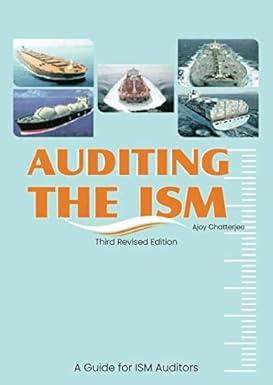Question
P6-4 Determining Bad Debt Expense Based on Aging Analysis LO6-3 [The following information applies to the questions displayed below.] Blue Skies Equipment Company uses the
P6-4 Determining Bad Debt Expense Based on Aging Analysis LO6-3
[The following information applies to the questions displayed below.]
| Blue Skies Equipment Company uses the aging approach to estimate bad debt expense at the end of each accounting year. Credit sales occur frequently on terms n/60. The balance of each account receivable is aged on the basis of three time periods as follows: (1) not yet due, (2) up to one year past due, and (3) more than one year past due. Experience has shown that for each age group, the average loss rate on the amount of the receivable at year-end due to uncollectability is (a) 8 percent, (b) 11 percent, and (c) 35 percent, respectively. |
| At December 31, 2014 (end of the current accounting year), the Accounts Receivable balance was $52,600, and the Allowance for Doubtful Accounts balance was $1,060 (credit). In determining which accounts have been paid, the company applies collections to the oldest sales first. To simplify, only five customer accounts are used; the details of each on December 31, 2014, follow: |
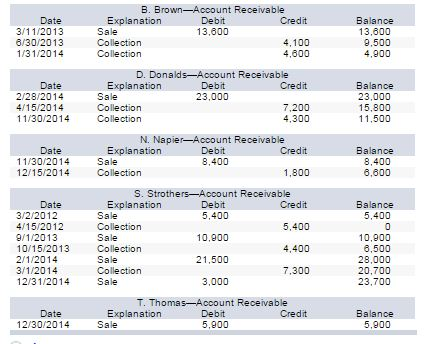
Required: 1

Required: 2
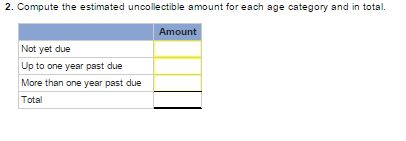
Required: 3
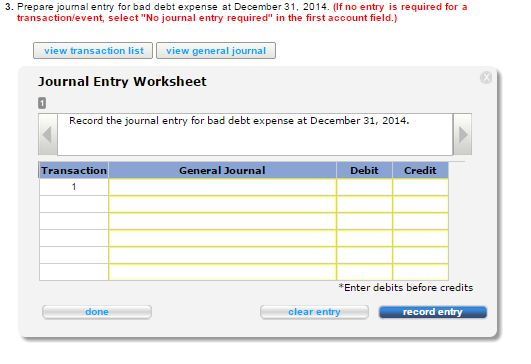
Required: 4
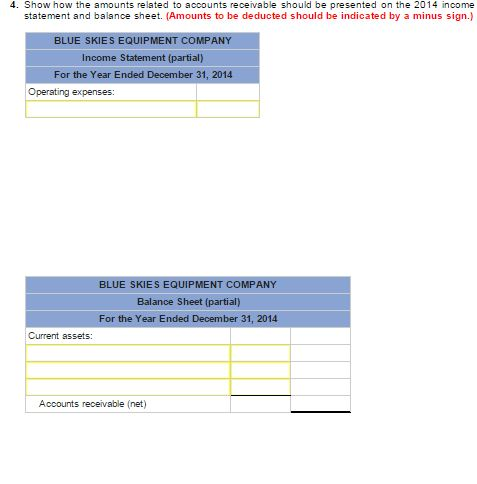
Step by Step Solution
There are 3 Steps involved in it
Step: 1

Get Instant Access to Expert-Tailored Solutions
See step-by-step solutions with expert insights and AI powered tools for academic success
Step: 2

Step: 3

Ace Your Homework with AI
Get the answers you need in no time with our AI-driven, step-by-step assistance
Get Started


